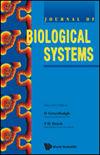Modeling the Control of Bacterial Disease by Social Media Advertisements: Effects of Awareness and Sanitation
IF 1.5
4区 数学
Q3 BIOLOGY
引用次数: 1
Abstract
Media impact has significant effect on reducing the disease prevalence, meanwhile sanitation and awareness can control the epidemic by reducing the growth rate of bacteria and direct contacts with infected individuals. In this paper, we investigate the impacts of media and sanitation coverage on the dynamics of epidemic outbreak. We observe that the growth rate of social media advertisements carries out a destabilizing role, while the system regains stability if the baseline number of social media advertisements exceeds a certain threshold. The dissemination of awareness among susceptibles first destabilizes and then stabilizes the system. The disease can be wiped out if the baseline level of awareness or the rate of spreading global information about the disease and its preventive measures is too high. We obtain an explicit expression for the basic reproduction number [Formula: see text] and show that [Formula: see text] leads to the total eradication of infection from the region. To capture a more realistic scenario, we construct the forced delay model by seasonally varying the growth rate of social media advertisements and incorporating the time lag involved in reporting of total infective cases to the policy makers. Seasonal pattern in the growth rate of social media advertisements adds complexity to the system by inducing chaotic oscillations. For gradual increase in the delay in reported cases of infected individuals, the nonautonomous system switches finitely many times between periodic and chaotic states.社交媒体广告对细菌性疾病控制的建模:意识和卫生的影响
媒介影响对降低疾病流行率有显著影响,同时卫生和意识可以通过降低细菌的生长速度和与感染者的直接接触来控制疫情。在本文中,我们调查了媒体和卫生报道对疫情爆发动态的影响。我们观察到,社交媒体广告的增长率起到了破坏稳定的作用,而如果社交媒体广告基线数量超过一定阈值,系统就会恢复稳定。在易感人群中传播意识首先会破坏系统的稳定,然后使其稳定。如果人们对该疾病及其预防措施的认识水平或全球信息传播率过高,该疾病可能会被消灭。我们获得了基本繁殖数的明确表达式[公式:见正文],并表明[公式:参见正文]可以从该地区彻底根除感染。为了捕捉更现实的场景,我们通过季节性地改变社交媒体广告的增长率,并将向政策制定者报告总感染病例所涉及的时间滞后纳入其中,来构建强制延迟模型。社交媒体广告增长率的季节性模式通过引发混乱振荡而增加了系统的复杂性。由于感染者报告病例的延迟逐渐增加,非自治系统在周期性和混沌状态之间切换了有限多次。
本文章由计算机程序翻译,如有差异,请以英文原文为准。
求助全文
约1分钟内获得全文
求助全文
来源期刊
CiteScore
2.80
自引率
12.50%
发文量
31
审稿时长
1 months
期刊介绍:
The Journal of Biological Systems is published quarterly. The goal of the Journal is to promote interdisciplinary approaches in Biology and in Medicine, and the study of biological situations with a variety of tools, including mathematical and general systems methods. The Journal solicits original research papers and survey articles in areas that include (but are not limited to):
Complex systems studies; isomorphies; nonlinear dynamics; entropy; mathematical tools and systems theories with applications in Biology and Medicine.
Interdisciplinary approaches in Biology and Medicine; transfer of methods from one discipline to another; integration of biological levels, from atomic to molecular, macromolecular, cellular, and organic levels; animal biology; plant biology.
Environmental studies; relationships between individuals, populations, communities and ecosystems; bioeconomics, management of renewable resources; hierarchy theory; integration of spatial and time scales.
Evolutionary biology; co-evolutions; genetics and evolution; branching processes and phyllotaxis.
Medical systems; physiology; cardiac modeling; computer models in Medicine; cancer research; epidemiology.
Numerical simulations and computations; numerical study and analysis of biological data.
Epistemology; history of science.
The journal will also publish book reviews.

 求助内容:
求助内容: 应助结果提醒方式:
应助结果提醒方式:


